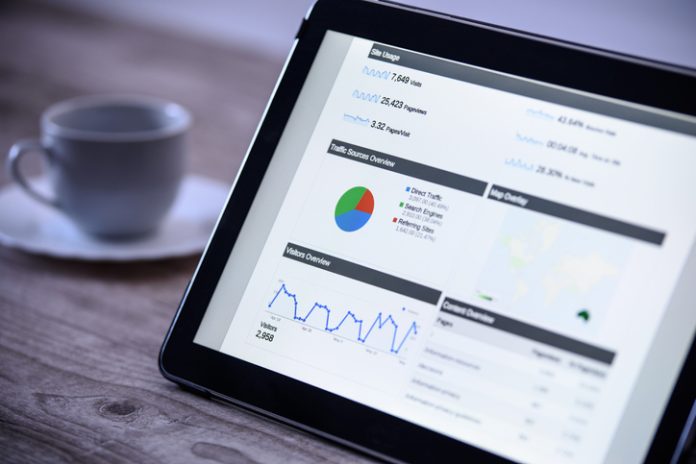Imagine you could accurately predict the future.
You see what your customer wants even before they click “buy.” You anticipate who’s going to abandon their cart at the last minute. You know which channel is going to drive maximum sales.
Imagine if you could make lightning-fast decisions based on real-time data. Actually, you don’t have to imagine. Real-time big data analytics, or streaming analytics, is already making it happen.
Organizations today no longer analyze the “data at rest” and make predictions. Because of technological advancements in storing, processing, and analyzing real-time streaming data, companies use the “data in motion” process instead.
What is real-time analytics?
Real-time analytics is a big data technology that analyzes and processes continuous, moving data with little to no time delay. It performs ultra-fast computations on data in motion to provide data visualization along with alerts and actions in real-time. Here, the data sources turn into clickstreams that monitor clicks on a website, credit card transactions, readings from the internet of things (IoT) devices, or comments on social media.
One technology, many names
Real-time analytics has many different names. You might hear it called:
- Streaming analytics
- Real-time streaming analytics
- Real-time big data analytics
- Event stream processing
Traditionally, organizations analyze and process data at rest. They store raw data in data lakes and warehouses like Hadoop to get immediate analysis or insights later. Data is then processed through batch processing, which is processing a massive amount of data simultaneously.
But it takes a long time, from a few hours to even a few days, and the technique won’t work for time-sensitive data that changes constantly. The data and its analysis will be stale by the time it’s processed.
On the other hand, streaming analytics continuously receives data streams from multiple sources and employs analytics to get actionable business insights with low (less than one second) latency. Insights from such analysis are used to initiate workflows through alerts, messages, or data storage. Imagine you host a call with your customer and want quick transcription of the call. You will use real-time data analytics.
Streaming analytics platforms don’t merely pull data in motion. They also gather data at rest, data that changes periodically, and any other form of data.
Why do we need real-time big data analytics?
We live in the era of big data. Almost 15 billion mobile devices and more than 11 billion IoT devices worldwide continuously stream data.
More than 330 billion emails, 100 billion WhatsApp messages, and 500 million tweets are sent daily. In 2020 alone, 64.2 zettabytes of data were created. The data is increasing exponentially every day as the world gets more connected.
With this data deluge, firms need quick, accurate, and reliable intelligence from the data in motion. It’s about rolling out an offer as the customer is ready to checkout, placing an ad when a user reads a specific article and detecting fraud when somebody swipes a stolen credit card. It’s about analyzing data instantly to take the right action, at the right time, and in the right place.
Consider this. You want to buy sneakers, so search for popular sneaker brands online and leave. Next time you open any website or social media app, you see a wide variety of sneaker ads. Real-time analytics help companies quickly pull data from multiple streams to identify potential customers and show these ads.
Streaming analytics makes this possible with event stream processing. From improving customer experience to reducing operational inefficiencies in real-time, streaming analytics improves sales, drives higher profit, and lowers costs.
Streaming analytics beats traditional analytics tools by:
- Processing a huge volume and variety of fast-moving datasets
- Performing real-time analytics with little to no latency
- Making enterprise data integration easier for building and managing data pipelines
- Coupling and decoupling analysis of different data streams without much difficulty
- Providing easy scalability even as incoming data increases exponentially
How does real-time analytics work?
To understand how real-time analytics work, let’s look at two basic concepts: events and event stream.
Events
An event is a data point on any activity that can be recorded at a time. It’s a way of capturing a statement of fact. It can be a click, an online payment, a stock trade, an activity in an online game, or a weather alert. Each captured data point is an event. People can take action on the recorded event data, like deciding to stay at home rather than go to the park when they get an alert about approaching thunderstorms.
Event Stream
Continuous series of data or events ordered by the time it happens is called an event stream. It’s also known as a data stream or streaming data. For example, a single data captured from a sensor on a machine is an event. An event stream is a series of real-time data tracked continuously from different sensors simultaneously.
Streaming analytics: how it gets done
Streaming analytics involves two types of technologies to perform real-time computations on data.
- The tech that collects, streams, and stores data in chronological order
- The system that processes the streaming data
Software like Apache Kafka and Confluent are event streaming services that ingest, store, and publish real-time data streams. Users access their preferred streams from multiple event streams available on the service.
The second type of technology is the event stream processing engine or stream processor, which lets you take action on incoming data. It analyzes the data stream through structured query language (SQL) or advanced machine learning algorithms. You can perform a wide range of actions based on the patterns and insights from the analysis.
For example, banks facilitate millions of real-time transactions every second. Banks get data streams on all transactions using streaming analytics and run real-time stream analytics to detect transaction anomalies. When the stream processing engine detects an issue, it immediately triggers a response from the security team.
Businesses can leverage various event stream processing software in the market, both open-source and commercial such as:
- IBM Event Streams
- Confluent
- Amazon Kinesis
- Apache Kafka
- Apache Flink
- Apache Spark
- Google Cloud Dataflow
- Oracle Cloud Infrastructure Streaming
Use cases
Read on for more info about use cases in different sectors.
Retail and eCommerce
Online retailers use stream processing to analyze users’ clickstreams and enhance their online shopping experience. With real-time analysis of customer interaction, companies can optimize prices, offer discounts, and manage inventory in the backend.
Walmart, for instance, uses real-time stream processing for product pricing, inventory adjustments, promotions, ads, offers, and logistics. From indexing and classifying a product for easy identification in search to updating offers, costs, and delivery in real-time, Walmart knows how to use stream processing to enhance the online customer experience.
Financial Services
Streaming analytics identifies fraudulent and suspicious transactions and automates responses to them in real-time. It can analyze account activity and generate security alerts when it detects issues in a data stream.
Other use cases of real-time analytics in the financial and banking sectors include:
- Automatic account updates
- Customer tracking and communication
- Market data analytics
RBC, one of the largest banks, uses event-driven architecture to provide quick customer service, reduce anomaly detection time from weeks to seconds, and lower costs.
Manufacturing
Manufacturing companies use streaming analytics to monitor supply chains, predict maintenance issues, prevent machine breakdown, and handle unplanned downtime and equipment failure. They can also collect and analyze real-time data from the IoT devices they make.
BMW analyzes vehicle telemetry from the millions of cars it manufactures.
News and media
Online news websites, media houses, and social media platforms leverage real-time analytics to understand the content that generates maximum interest for a particular user. They analyze user clicks, search records, locations, telemetry, and personalize content in a single time. For example, Twitter determines trends in real-time by using event stream processing.
Healthcare
Streaming analytics has many applications in the healthcare sector. Some include monitoring patient vitals, detecting anomalies, managing patient records and claims, and conducting drug trials and discovery analyses. Real-time event processing makes instant tracking of COVID-19 possible.
Get real with real-time analytics
We live in a data-driven world. Businesses, small and large, depend on real-time data analytics for faster and better decision-making. Streaming analytics makes data more organized, accessible, and valuable from the moment it’s generated. When an organization chooses streaming analytics, they are bound to make better decisions about sales, business operations, and customer experience. Embrace streaming analytics and unlock the power of instant big data processing.
About the Author
 Soundarya Jayaraman is a content community writer at G2.com. She loves to learn and write about the latest technologies and how they can help businesses. When she is not writing, you can find her painting or reading.
Soundarya Jayaraman is a content community writer at G2.com. She loves to learn and write about the latest technologies and how they can help businesses. When she is not writing, you can find her painting or reading.



































